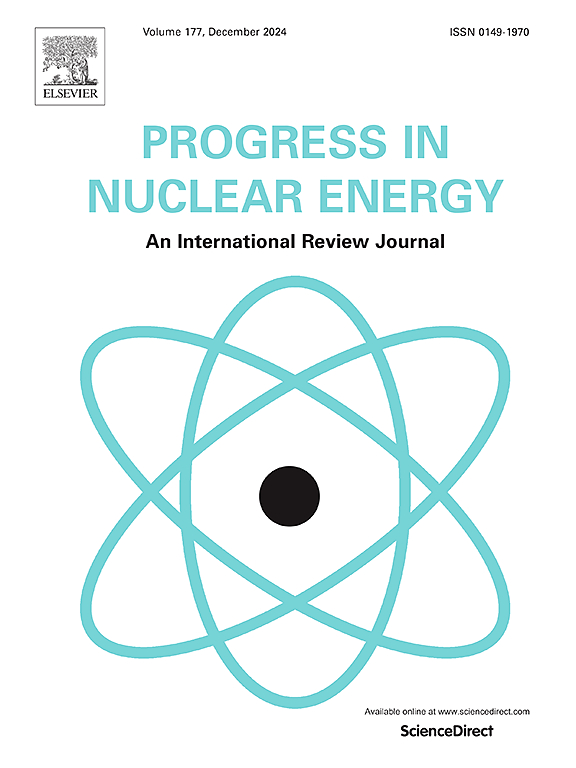Study on bubble growth interphase heat transfer of rapid decompression
IF 3.3
3区 工程技术
Q1 NUCLEAR SCIENCE & TECHNOLOGY
引用次数: 0
Abstract
In a loss of coolant accident in a nuclear reactor, steam bubbles undergo superheated growth, where the interphase heat transfer coefficient significantly influences both the bubble growth rate and the void fraction of the two-phase flow. The bubbles should be grown within a homogeneous temperature field in order to facilitate a more comprehensive investigation into the characteristics of interphase heat transfer. Most existing studies are based on vapor bubbles generated within vaporization holes on walls. However, due to temperature gradients near the wall, these studies have limitations regarding heat transfer conditions and bubble shape. To investigate the realistic growth behavior characteristics of vapor bubbles during reactor loss-of-coolant accidents, the experiment was conducted on bubble growth in superheated liquid phases using a visual pressure vessel capable of creating instantaneous pressure drops. The system pressure ranged from 0.20 to 2.93 MPa. By employing high-speed cameras, pressure sensors, and thermocouples, the study investigated the impact of varying degrees of superheat, bubble Reynolds numbers, and Prandtl numbers on bubble growth rate. In this paper, a novel approach is proposed to investigate the interphase heat transfer coefficient under pressure drop, and its results are compared with previous methods that neglected the influence of vapor expansion. The correlation function incorporates Reynolds number, Jacob number, and Prandtl number, indicating the equation reveals the quantitative correlation between the interphase heat transfer coefficient and convection as well as heat conduction. Average heat transfer coefficients are determined for various operating conditions, leading to the development of an empirical correlation equation for the interphase heat transfer coefficient with an average relative error of 16.6%. Comparisons between the new correlation and other experimental data demonstrate its effectiveness in predicting the growth radius of the bubble.
求助全文
约1分钟内获得全文
求助全文
来源期刊

Progress in Nuclear Energy
工程技术-核科学技术
CiteScore
5.30
自引率
14.80%
发文量
331
审稿时长
3.5 months
期刊介绍:
Progress in Nuclear Energy is an international review journal covering all aspects of nuclear science and engineering. In keeping with the maturity of nuclear power, articles on safety, siting and environmental problems are encouraged, as are those associated with economics and fuel management. However, basic physics and engineering will remain an important aspect of the editorial policy. Articles published are either of a review nature or present new material in more depth. They are aimed at researchers and technically-oriented managers working in the nuclear energy field.
Please note the following:
1) PNE seeks high quality research papers which are medium to long in length. Short research papers should be submitted to the journal Annals in Nuclear Energy.
2) PNE reserves the right to reject papers which are based solely on routine application of computer codes used to produce reactor designs or explain existing reactor phenomena. Such papers, although worthy, are best left as laboratory reports whereas Progress in Nuclear Energy seeks papers of originality, which are archival in nature, in the fields of mathematical and experimental nuclear technology, including fission, fusion (blanket physics, radiation damage), safety, materials aspects, economics, etc.
3) Review papers, which may occasionally be invited, are particularly sought by the journal in these fields.
 求助内容:
求助内容: 应助结果提醒方式:
应助结果提醒方式:


